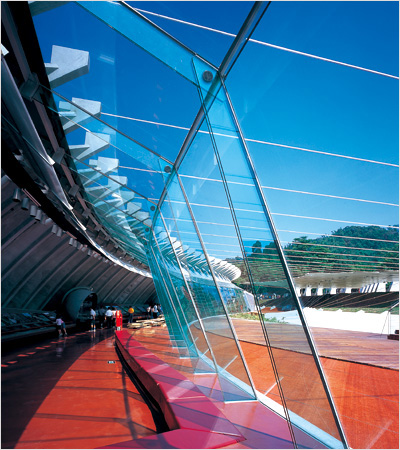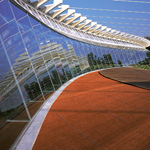| |
| |
.gif) |
| |
| Detect occasional occurrence of nickel sulfide (NiS) inclusions in tempered glass. Under strictly controlled temperatures, high- temperature α -NiS converts to low-temperature β-NiS which accompanies a 2-4% expansion in volume and causes the glass to break if NiS inclusion is located at tensile stress. The test reduces the frequency of spontaneous breakage of tempered glass after installation. Tempered glass is heat soaked for 2-8 hours (T2) at a constant temperature of 290°C±10°C (EN standard states 2 hours) and then allowed to return to room temperature over a specified time. |
| |
| |
 |
|
Benefits
|
| |
|
| ˙ |
Computerized control system, guaranteed quality. |
| |
The Tamglass fully-automated computerized control system is internationally recognized and offers guaranteed quality. |
| |
|
| ˙ |
Reduces risks of spontaneous breakage of tempered glass. |
| |
|
| ˙ |
Increases strength and safety |
| |
Tempered glass is 5 times stronger than annealed glass and is very safe. However, after installation, tempered glass may shatter spontaneously for no apparent reason, sometimes even after being used for many years. These rare incidences of breakage cause damage to cars and people. To reduce the frequency of such instances, tempered glass should specify the hest soak test during design. |
|
|
| |
| Applications: |
| |
| All tempered glass should undergo heat soak test. |
| |
| |
| Specification: |
| |
| ‧Thickness:3mm-19mm |
| ‧Max. size:118” x 315”(3000mm x 8000mm) |
| ‧Min. size:12” x 12”(300mm x 300mm) |
| |
| |
| Heat Soak Test Process and Temperature Changes: |
| |
| Tempered glass is heat soaked for 2-8 hours (T2)at a constant temperature of 290℃±10℃(EN standard states 2 hours) and then allowed to return to room temperature over a specified time. |
| |
| |
|
|
| |
| Examples of Applications: |
| |
 |
| 921 Earthquarke Museum |
| Nantou |
| CLR-TEMP-Heat Soak |

